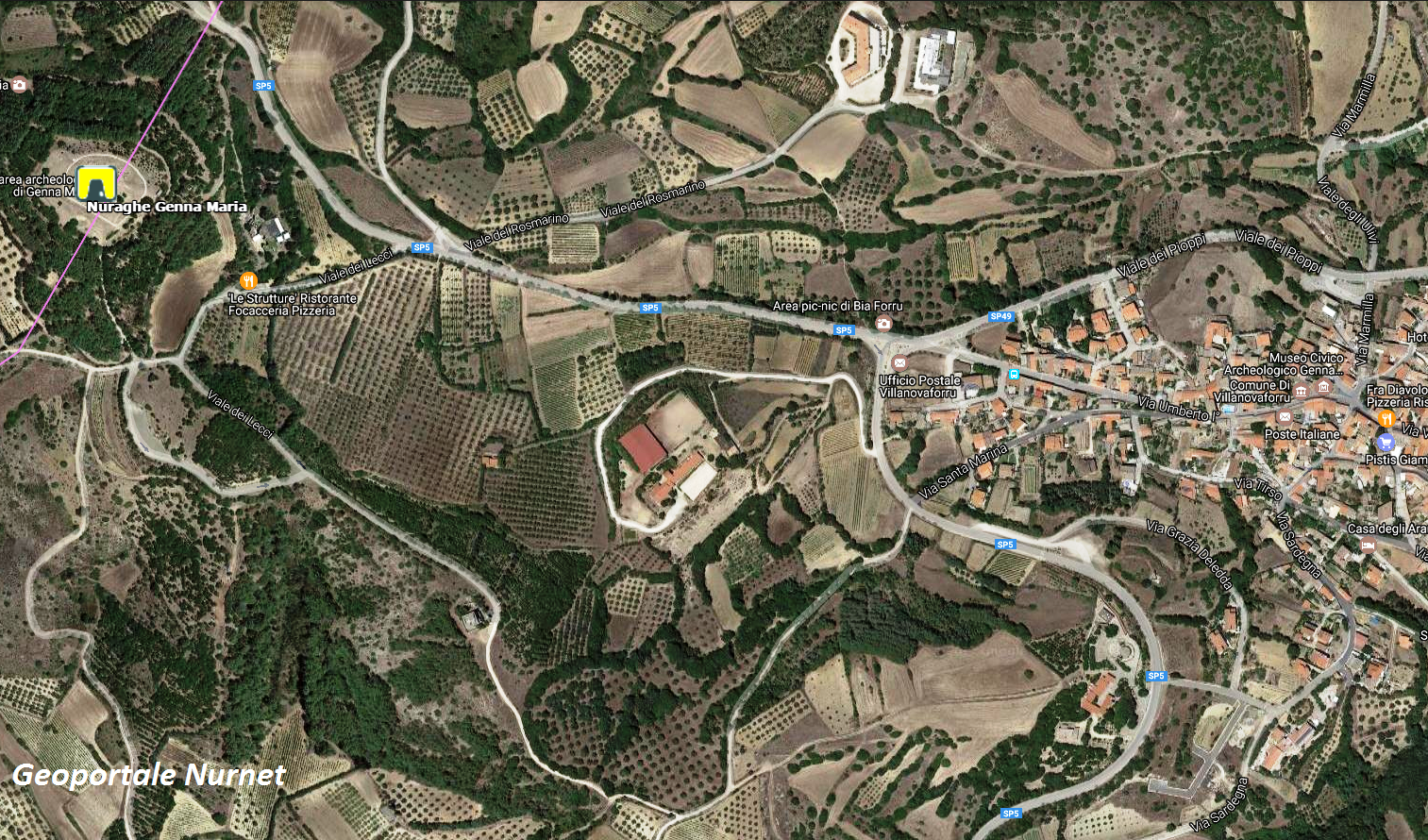“The name of the site means ‘Gate of the Seas’; it may derive from its geographical location, on a hill at the foot of the Giara from which one can admire part of the Campidano plain and, on beautiful days, the sea of the Gulf of Cagliari. The settlement consists of a trilobate nuraghe, a turreted antemural, and a village of huts. The large central tower dates back to the Middle Bronze Age, later encased with a trilobate bastion. It was built with poor quarry material, soft local rock, and for this reason is not in optimal condition. Only the lintels and other parts built from volcanic material remain. The village was abandoned around 800 BC due to a violent fire. Numerous everyday objects were found inside the village, abandoned by the inhabitants due to a hasty escape. The village was reused in historical times until the Roman domination, serving as a sacred place for the worship of Demeter and Core, as evidenced by the ex-votos found in the central tower. The objects found are displayed in the Archaeological Museum of Villanovaforru. (Giovanni Lilliu: “Sardegna Nuragica”. Edition Il Maestrale -2006). The photos of the nuragic complex of Genna Maria in Villanovaforru are by Diversamente Sardi, Andrea Mura-Nuragando Sardegna, and Francesca Cossu.”









